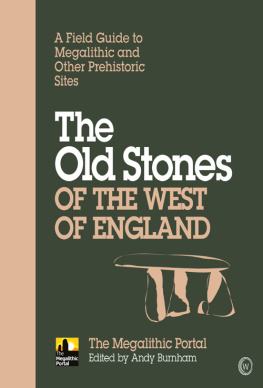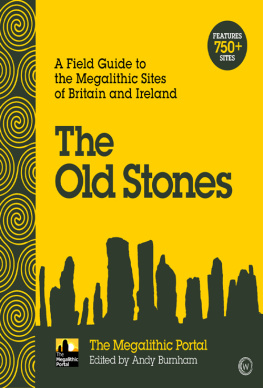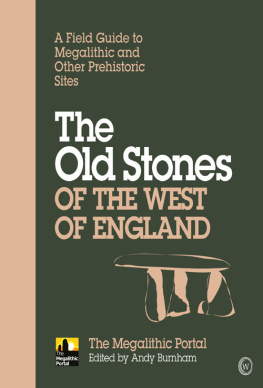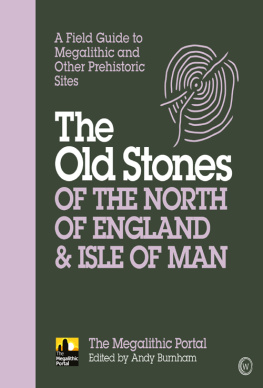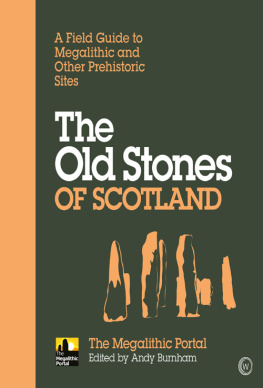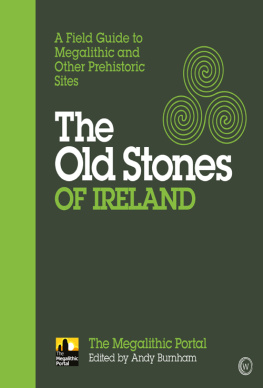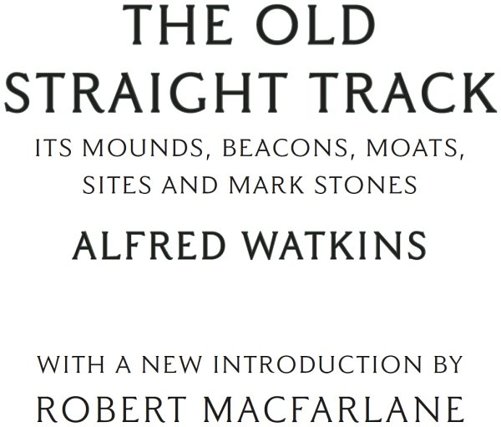

www.headofzeus.com
CONTENTS
Main Text |
I. |
II. |
III. |
IV. |
V. |
VI. |
VII. |
VIII. |
IX. |
X. |
XI. |
XII. |
XIII. |
XIV. |
XV. |
XVI. |
XVII. |
XVIII. |
XIX. |
XX. |
XXI. |
XXII. |
XXIII. |
XXIV. |
XXV. |
XXVI. |
XXVII. |
XXVIII. |
XXIX. |
XXX. |
Endmatter |
( Photographs by Alfred Watkins.
Diagrams and Sketches by W. H. McKaig )
Frontispiece: Alfred Watkins
Maps of Hereford and surrounds
FIG. (INTRODUCTION BY ROBERT MACFARLANE)
1. The Woolhope Club at Goodrich Court (photograph by J. Parker)
2. Farmland near Abbey Dore
3. Bronge Age Cist
4. Watkins inscription at Dinmore Hill
5. Ruins of Wigmore Castle
6. Distant View of Knighton
FIG. (INTRODUCTION BY ALFRED WATKINS)
1. Track sighted on Notch, Llanthony
FIG . ( MAIN TEXT )
1. Caple Tump, assembly point for amusement
2. Caple Tump, flat top, with earth walling
3. South Radnor Mound Alignment
4. Pilleth Mound Alignment
5. A Cotswold Ley
6. A Hereford Church Ley
7. Hundred House Mount
8. Turret Tump, Michaelchurch-on-Arrow
9. The Batch Twt, Almeley
10. Mound, Capler Camp
11. Hundred House
12. Part of S. Radnor Mound Alignment
Based upon the Ordnance Survey Map with the sanction of the Controller of H.M Stationery Office
13. Church Leys, Woolhope to Aconbury
Based upon the Ordnance Survey Map with the sanction of the Controller of H.M. Stationery Office
14. Arthurs Stone, mound sighted on Green Way
15. Arthurs Stone, near view
16. Hills round Radnor Vale
17. Radnor Forest, skyline with mounds
18. The Black Mixen
19. Avenue to Old Radnor Church on Ley
20. Ley through New Radnor Mound to above
21. Scotch Firs, on barrow site, Radnor Vale
22. Radnor Vale, eastern end.
Based upon the Ordnance Survey Map with the sanction of the Controller of H.M. Stationery Office
23. The Four Stones, New Radnor
24. Mark Stone, Knobley to Burfa
25. Mark Stone, Kinnerton, and Whimble
26. Natural Boulder, Old Radnor
27. Burfa Camp, contour vallum
28. Mark Stone, Beggars Bush, New Radnor
29. Mark Stone, Cwm Bwnt, Clyro, Radnor
30. Mark Stone, The Leys, Weobley
31. Mark Stone, English Bridge, Shrewsbury
32. Mark Stone, Leominster
33. Mark Stone, at well, Michaelchurch-on-Arrow
34. Mark Stone, Wergins Stone, Sutton
35. Mark Stone, Vowchurch, at ford, in churchyard
36. Long Stone, Staunton, Gloucestershire
37. Long Stone, Wern Derries, Michaelchurch Escley
38. Long Stone, Harolds Stones, Trelech, Mon.
39. The Clump, Mansel Gamage, distant view
40. The Clump, Mansel Gamage, near view with Lady Lift
41. The Clump, Mansel Gamage, with mark stone
42. Mark Stone for ford, Wye Street, Hereford
43. The Queen Stone, Huntsham, Symonds Yat
44. The Queen Stone, Huntsham, Symonds Yat
45. Holy Well, Cornwall
46. Cresset, Llanthony
47. Churches align to Dinedor Camp. (Telephoto)
48. Devils Arrow, Boroughbridge, Yorks
49. Herrock to Hanter, sighted track
50. Hanter to Herrock
51. Tre-Fedw Mound, with Skirrid Mountain
52. Tre-Fedw Mound, sighted on road to south
53. Tre-Fedw Mound, sighted on road to north
54. Stoned Track, Hereford, section
55. Stoned Track, Hereford, surface
56. Hollow Road to Wye Ford, Much Fawley
57. Hollow Road to Sky Notch, Wormsley
58. Water Sight Point, Moat, Eardisland
59. Water Sight Point, Causeway through Pond, Holmer
60. Eardisland, track through mound and ford
61. Longtown, hollow road to ford and notch
62. Longtown, causeway of above through ford
63. Longtown Castle Keep, on mound
64. Longtown Castle, aligning with church to Black Hill
65. Longtown Castle, camp earthwork aligning to
66. Sight Notch, in desert, Ghaza
Photo by C. H. Harvey
67. Sight Notch, Pandy
68. Sight Notch, Cwm-y-Yoy
69. Sight Notch, Llanthony
70. Sight Notch, Black Darren, Longtown
71. Sight Notch, Coldmans Hill
72. Sight Notch, Rhiw-cwrw
73. The Dodman (snail)
74. Bwlch-yr-Effengyl, Black Mountains
75. Llanthony, sighted track through Abbey
76. Llanthony, sighted track through Abbey, reverse direction to notch
77. Llanthony Abbey, with mountain tracks
78. Initial points, Malvern Range, Herefordshire side
79. Herefordshire Beacon or British Camp
80. Coles Tump, with Black Mountains, etc.
81. Walterstone Camp and ley
82. Ivington Camp and leys
83. Credenhill, Magna, and Brinsop Camps
Based upon the Ordnance Survey Map with the sanction of the Controller of H.M. Stationery Office
84. Dinedor Camp and ley
85. Aconbury Camp and ley
86. Capler Camp and ley
87. Capler Camp, within the vallum
88. Longtown Castle, Camp, and leys
89. Sighting Staves, Long Man, Wilmington
90. Sighting Staves, Statue at Tut-ankh-amens Tomb
91. Sighting Staves, Pilgrims
92. Sighting Staves, a Roman Optios
93. Sighting Staves, a Pilgrims
94. Method of using sighting staves
95. Pembridge Market House and mark stone
96. Grosmont, market stone prehistoric
97. Grosmont, market stone in Market House
98. Pembridge: socket stone of Market Cross
99. Bristol Nails (market tables) the oldest
100. Bristol Nails (market tables) all four
101. Sacrificial Stone, the Malverns
102. Giants Cave, the Malverns
103. Holme Lacy Church, orienting over Wye ford
104. Stonehenge, with aligning barrows
105. Stonehenge, sketch of
106. Cascob Church, on a mound
107. Wigmore Church, on a bank
108. Leys through Bristol churches
109. Bristol Church Ley, through St. Johns Gate
110. Ditto, reverse view to Christchurch
111. Offa St. ley, Hereford, from St. Peters, sighted on Cathedral
112. Ditto, sighted on St. Peters, from Cathedral
113. Ditto, from Aylestone Hill, showing above with Beechwood Knowl
114. Ditto, above three points and a pond aligning
115. Silchester, temples and churches on leys
Based on the Map of the Society of Antiquaries, with their sanction
116. Richards Castle, church orients to mound
117. Ewias Harold Castle, church orients to mound
118. Kilpeck Castle, church orients to mound
119. Exeter Castle, Saxon windows
120. Skenfrith Castle, central keep on mound
121. Wigmore Castle, on mound
122. Ewias Harold Castle, mound site
123. London Roman Walls, align to White Mount
124. Cruger Castle, Radnor Forest
125. Castle Farm, Madley, causeway to mound
Next page



